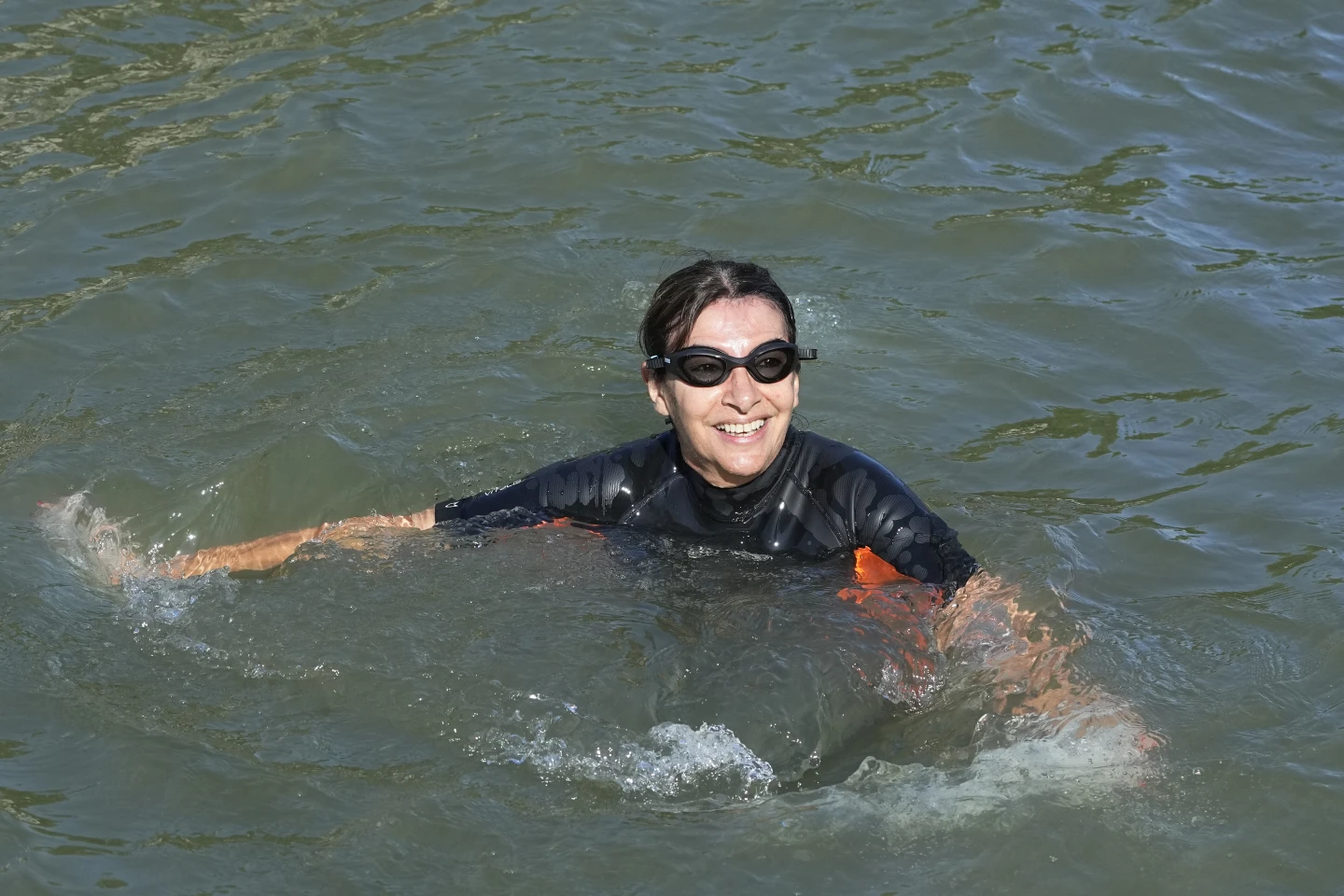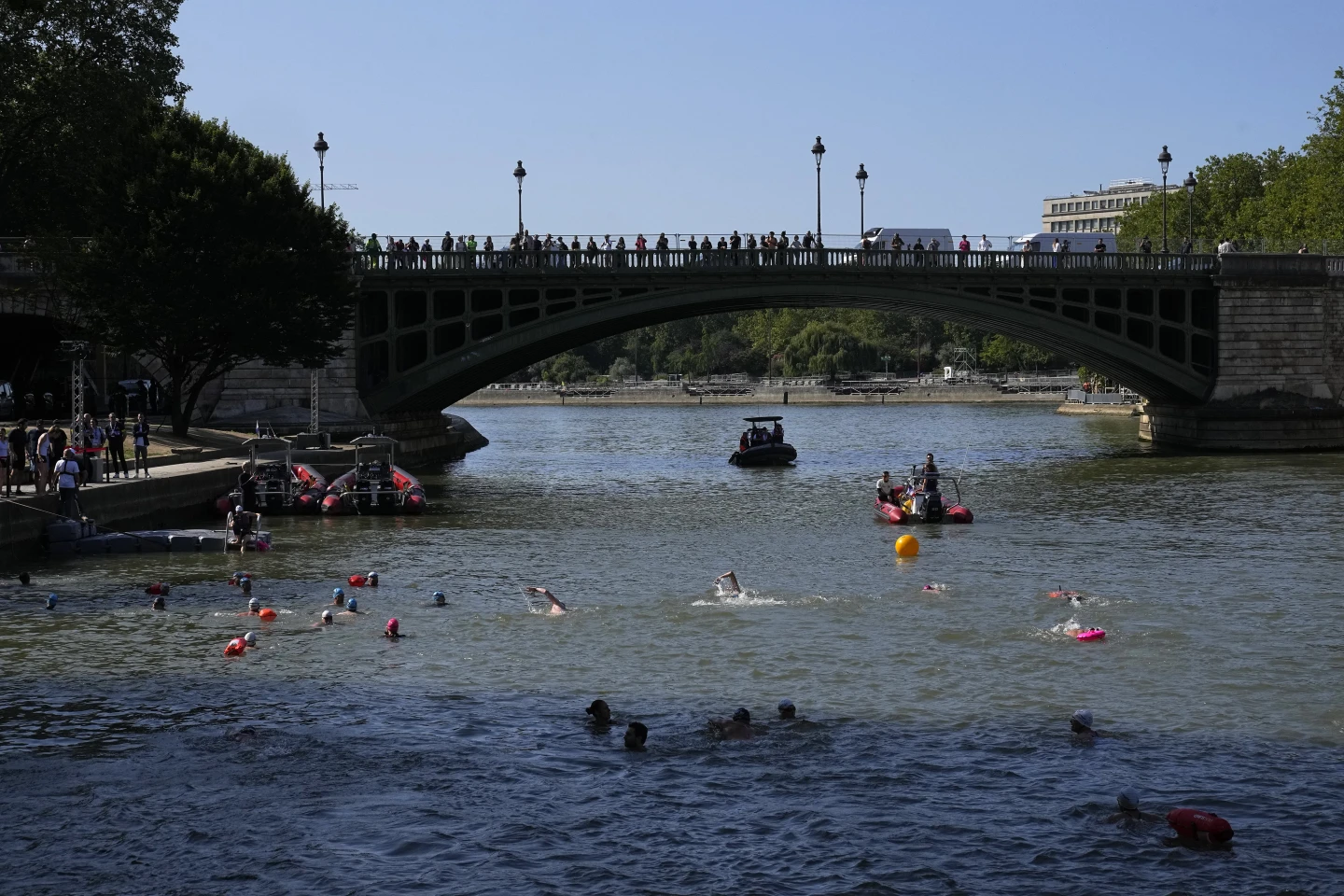Paris Mayor Anne Hidalgo fulfilled her promise on Wednesday by swimming in the Seine River. She aimed to demonstrate that the once heavily polluted waterway is now clean enough to host swimming events during the upcoming 2024 Olympics, including part of the opening ceremony just nine days away.
Recent daily tests in early June initially showed high levels of E. coli bacteria in the water, but there have been significant improvements since then.
Wearing a wetsuit and goggles, Hidalgo entered the river near City Hall, her office, and Notre Dame Cathedral. She was joined by Paris 2024 chief Tony Estanguet, Marc Guillaume (the top government official for the Paris region), and local swimmers from swimming clubs.
Speaking from the water, Hidalgo praised the Seine’s beauty. After coming out of the water, she remarked, “The water quality is very good. It’s a bit cool, but not bad at all.” She described the day as “a dream” and highlighted the city’s efforts, particularly its “swimming plan” launched in 2015, as crucial to achieving this milestone.

They swam about 100 meters downstream, alternating between the crawl and breaststroke.
Tony Estanguet, who has won three Olympic gold medals in canoeing, expressed admiration for the river’s improved condition, noting, “After twenty years of sports in the river, it’s remarkable to see the efforts to clean it up.”
This event is part of broader initiatives to showcase the Seine’s improved cleanliness ahead of the Summer Games, which begin on July 26 with an elaborate outdoor ceremony featuring an athletes’ parade on boats along the river.
Swimming in the Seine has been prohibited for more than a hundred years. Since 2015, organizers have invested $1.5 billion to get the river ready for the Olympics and to make sure Parisians have a cleaner river after the Games.
The plan involved building a large underground water storage basin in central Paris, updating sewer systems, and improving wastewater treatment plants.
Originally scheduled for June, Mayor Hidalgo’s swim was postponed due to sudden parliamentary elections in France. On the original date, the hashtag “jechiedanslaSeine” (“I’m pooping in the Seine”) trended on social media as some threatened to protest the Olympics by contaminating the river upstream.

Despite this, Hidalgo proceeded with her swim on Wednesday, carefully entering the river using a ladder placed in an artificial pond set up for the event. Seven security boats were on hand for safety.
The banks of the river were crowded with curious onlookers. “I wouldn’t have missed this for anything,” said Lucie Coquereau, who woke up early to get a prime view from the Pont de Sully bridge overlooking the swimming area.
Enzo Gallet, a competitive swimmer who has participated in France’s national open-water championship, was one of the athletes invited to test the Seine alongside the Paris mayor.
The 23-year-old swam just a few meters away from Hidalgo. “Her freestyle technique was quite good,” he said after emerging from the water. “It’s really special to be among the first to swim in the heart of Paris after so long.”
After the officials left the river banks, many swimmers remained in the water, some playing catches with a ball and others practicing their dives in the artificial pond — all in a lively atmosphere.

Other politicians have promised to clean up the Seine. Jacques Chirac, the former French president, made a similar commitment in 1988 while serving as Paris mayor, but it never came to fruition.
Following in the footsteps of French Sports Minister Amélie Oudéa-Castéra, who swam in the Seine last Saturday wearing a full-body suit, Hidalgo also took a swim in the river.
Concerns about the flow and pollution levels of the Seine have persisted, leading to daily water quality tests conducted by the monitoring group Eau de Paris. Tests conducted in early June showed elevated levels of E. coli bacteria, but there have been improvements since then.
During the Games, the Seine will host various open-water swimming events, including marathon swimming at the Olympic Games and the swimming portions of the Olympic and Paralympic triathlons.
